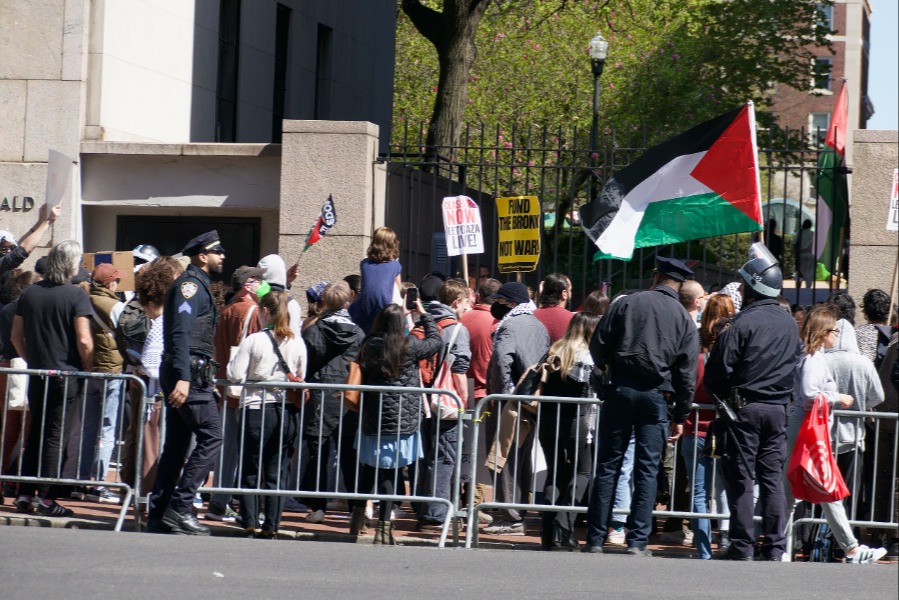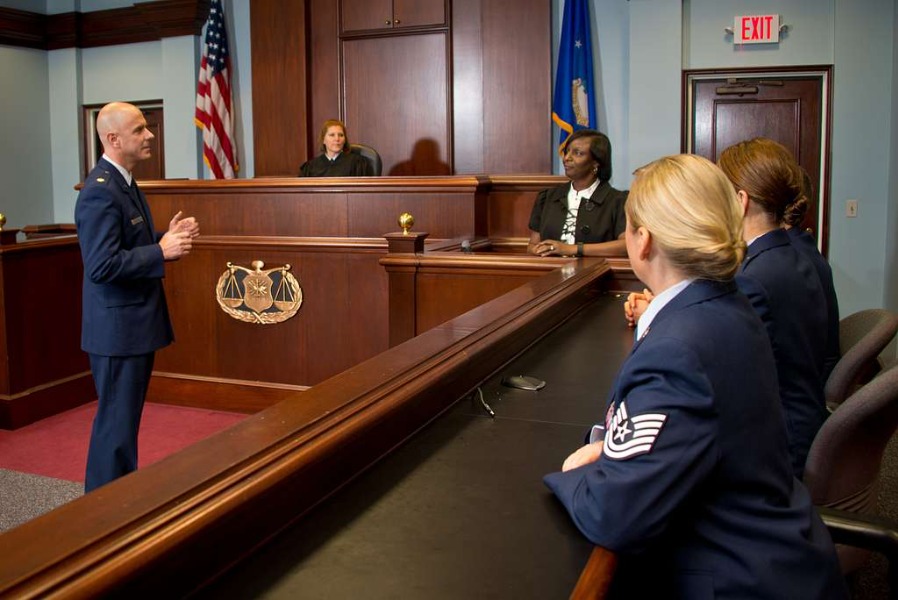Building the Border Wall: An Update
On January 25th, President Donald Trump signed an executive order on "Border Security and Immigration Enforcement Improvements," marking the first step in building a full-length border wall along the United States’ southern border. The order spurred the U.S. government into action, but the wall’s speedy and complete construction is by no means a done deal.

Published by The Lawfare Institute
in Cooperation With

On January 25th, President Donald Trump signed an executive order on "Border Security and Immigration Enforcement Improvements," marking the first step in building a full-length border wall along the United States’ southern border. The order spurred the U.S. government into action, but the wall’s speedy and complete construction is by no means a done deal. Two and a half months after the order's issuance, there are evolving questions in Trump’s cabinet over what constitutes a "wall," what it will look like, how much it will cost, and how to tackle the legal obstacles that threaten to drag on the construction timeline.
The biggest shift since January is what the administration even means by “wall.” Throughout Trump’s presidential campaign, he promised an “intangible, physical, tall, power [sic], beautiful southern border wall.” And in the January executive order, this language was molded into a “contiguous, physical wall or other similarly secure, contiguous, and impassable physical barrier.” This border wall (or similarly impassable barrier) was to be complemented by increased technology, surveillance, and manpower.
However, over the past few weeks, the wall’s definition appears to be shifting. The new tone was evident in Department of Homeland Security Secretary John Kelly’s April 5th hearing before the Senate Homeland Security and Governmental Affairs Committee, and summed up succinctly in his brief exchange with Senator John McCain:
Senator John McCain: “Can you interpret a wall, the word wall as being drones, towers, fences, attempts at using technology to detect tunnels, to have a really, what is an electronic wall plus the personnel. Could that fit the definition of a wall…?”
Secretary John Kelly: “Yes sir. In my view, the wall is all of that.”
It also does not appear that Secretary Kelly is freelancing on U.S. border security policy. Earlier in the hearing, he appeared to be confident that President Trump would accept this broader definition of what constitutes as a wall, saying:
Secretary Kelly: “The president knows that I am looking at every variation on the theme and I have no doubt when I go back to him and say, you know, boss, ‘wall makes sense here, high tech fencing makes sense over here, technology makes sense over here,’ I have no doubt that he will go tell me to do it.”
If the wall does not stretch the entire length of the border, how long will it actually be (putting aside the 654 miles of primary fencing that already divide the United States and Mexico)? The answer appears to be unconfirmed or at least not publicly available. Kelly explained that he planned to ask the head of each border patrol sector for their fencing requests and to take them into consideration. He stated: “It is unlikely that we will build a wall or physical barrier from sea to shining sea, but it is very likely that I am committed to putting it where the men and women say we should put it.”
For this new wall of to-be-determined length, Customs and Border Protection (CBP) solicited two proposal requests this past March 17th for a “Solid Concrete Wall” and an “Other Border Wall,” which could be made of materials other than concrete. The requirements for each included:
- Be physically imposing in height. The government’s nominal concept is for a 30-foot high wall…. But designs of at least 18 feet may be acceptable.
- It shall not be possible for a human to climb to the top of the wall or access the top of the wall from either side unassisted.
- The wall shall prevent digging or tunneling for a minimum of six feet below the lowest adjacent grade.
- The wall shall prevent/deter of one hour the creation of a physical breach of the wall.
- The north side of the wall (i.e. U.S. facing side) shall be aesthetically pleasing.
Hundreds of companies are alleged to have signed up as interested vendors and a number of companies submitted their proposals by the April 4th deadline. While the submissions were not publicly disclosed (as per official protocol), some companies have gone to the media with their submissions, which included everything from wire mesh fences, to walls that host tourist platforms with desert views, to walls decked out with solar panels. CBP’s next steps for contracting a border wall construction company include picking four to ten finalists by June 1st and asking them to build their wall prototypes along a portion of the San Diego area border.
The costs for these wall prototypes are estimated at between $200,000 and $500,000 but the costs for the entire border wall remain unclear. Trump has estimated that it would total $12 billion, Paul Ryan and Mitch McConnell put the upper bound at $15 billion, an internal DHS report suggested $21 billion (a number that Trump tweeted would come down), Bernstein Research put it at $25 billion after evaluating construction materials’ fluctuating prices, an MIT article claimed $29 billion (for a wall that is 30 feet tall, goes 6 feet underground, and spans 1,000 miles), and Senator Claire McCaskill’s office estimated $67 billion (using the Trump administration’s FY2018 budget request’s proposed $36.6 million per border wall mile and extrapolating it to the entire border).
Secretary Kelly himself was coyer on the costs in his hearing, stating: “There is no way I can give the committee an estimate of how much this will cost. I mean, I don’t know what it will be made of, I don’t know how high it will be, I don’t know if it is going to have solar panels on its side, what one side is going to look like, how it will be painted. I have no idea. So I can’t give you any type of an estimate.”
However, in its FY2017 supplemental budget request, the administration gave a bit of insight into what it was thinking regarding costs. It asked for $1 billion, allegedly to fund 62 miles of border security, including 14 miles of new border wall and 14 miles of replacement fencing near San Diego and 28 miles of levee wall barriers and 6 miles of border wall in the Rio Grande Valley. In its FY2018 budget proposal, the Trump administration requested another $2.6 billion for the construction of its border wall and technology. However, House Speaker Paul Ryan is expected to push off debating or appropriating any border wall funding until September. Mexico also maintains its position that it will not pay or reimburse the United States for the wall.
Pushing up the border wall’s costs are the myriad legal challenges that come with building a mega-infrastructure project across the North American continent.
First is obtaining the land for the border wall, given that two thirds of the border is in state or private hands. The Trump administration’s preferred method for acquiring this land appears to be through eminent domain lawsuits. And it is already gearing up for these often prolonged legal battles with a line in its “America First” budget blueprint that: “Supports the addition of 20 attorneys to pursue Federal efforts to obtain the land and holdings necessary to secure the Southwest border.” These cases can drag on for years, as evidenced by the 90 eminent domain cases that remain open in southwest Texas after 400 were filed in 2006.
Second are the other legal battles that are already brewing. Apart from seeking environmental waivers for parts of the border wall (which the administration has already allegedly begun doing), a recently filed lawsuit from the Center for Biological Diversity, along with House Representative Raúl Graijalva (D-Arizona), argues that the Trump administration must submit its plans to an environmental review before erecting a border wall. Separately, the Tohono O’odham, an indigenous group whose land stretches across the border, has also filed a petition with the Inter-American Commission on Human Rights to impede the border wall. And finally, adding more complications to the wall's construction will be its compliance with the regulations set out by the United States and Mexico’s International Boundary and Water Commission.
Secretary Kelly has made it clear that he hopes the administration will be well into the border wall’s construction by 2019, an ideal timeframe for a Trump administration moving into the 2020 presidential campaigns. However, the budgetary, political, and legal fights will be fierce and likely unrelenting, and two months in, they are just getting started.





